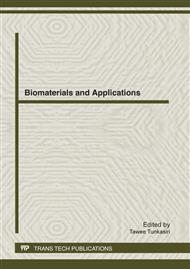p.583
p.587
p.591
p.595
p.599
p.603
p.607
p.611
p.615
Inhibitory Effect of Chitosan Films Incorporated with 1,8-Cineole on Salmonella Attached on Model Food Surface
Abstract:
Antimicrobial packaging is a form of active packaging that has been developed to extend the shelf life of fresh fruits and vegetables by increasing the safety margin of such products via controlling the growth of pathogenic bacteria. A feasibility study of using chitosan-based films incorporated with 1,8-cineole, a representative active component in natural essential oil, for controlling the growth of Salmonella on a model food surface was conducted in this work. 1,8-cineole was added to the film forming solution at 2, 3, 4% (w/w). After drying at 40 °C and aging at 25 °C (75% RH) for 48 h, the concentrations of 1,8-cineole in the dried films were 37 - 121 ppm. The inhibitory effect of the prepared films was tested against Salmonella Anatum grown on Nutrient Agar (NA) at 30 °C. It was found that addition of 2 3% (w/w) 1,8-cineole during film preparation retarded the growth of Salmonella. In the case of film prepared by adding 4% (w/w) 1,8-cineole during film preparation, no growth was observed on the XLD agar after the first day of incubation.
Info:
Periodical:
Pages:
599-602
Citation:
Online since:
April 2012
Authors:
Keywords:
Price:
Сopyright:
© 2012 Trans Tech Publications Ltd. All Rights Reserved
Share:
Citation:


